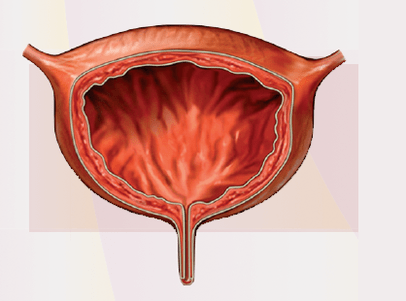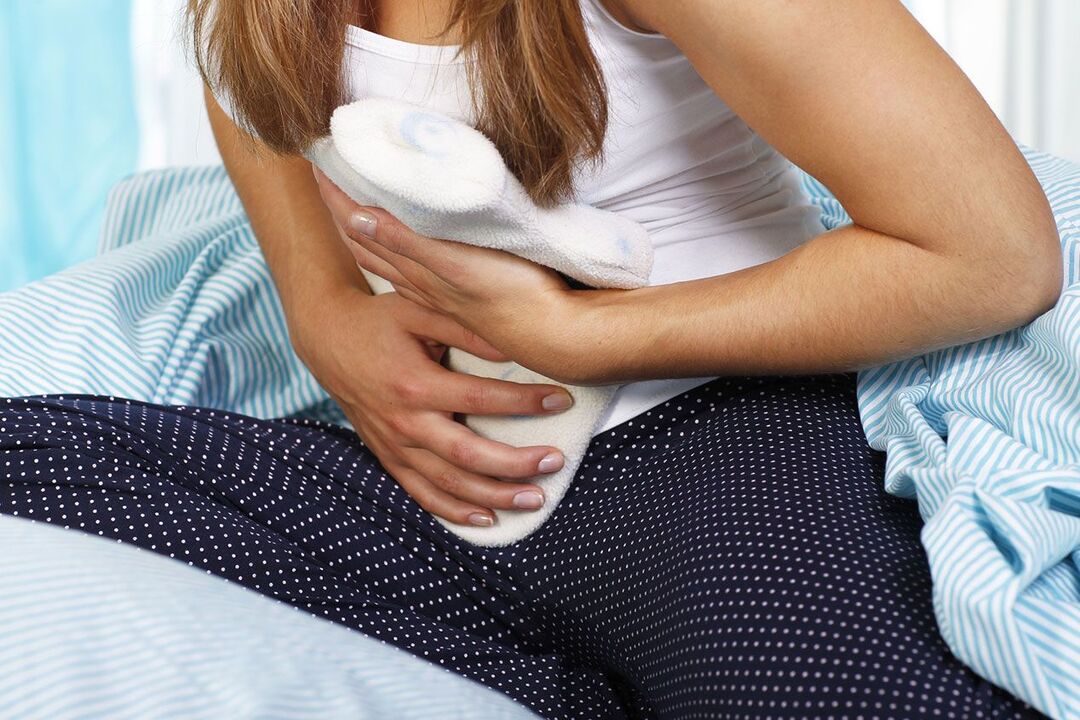Cystitis is an inflammation of the bladder wall. It is characterized by rapids (every 15-20 minutes), very painful urine in small parts, sometimes with blood mixture, subfebrile body temperature. The transition of the disease to chronic forms, climbing infections and the development of the inflammatory process in the kidneys, and in decreases - in the urethra possible. In the diagnosis of cystitis, urine analysis and bladder ultrasound results help urologists. To determine the etiology of cystitis, the spread of urine bacteria and smear from the urethra are performed. Cystitis therapy shows primarily the effective effects of drugs on the infectious agent that causes it.
General information
Cystitis is an inflammation of the bladder mucous membrane. In most cases, cystitis has an infectious nature. The disease is extensive, affecting representatives of weak and strong sex, but more common in women due to some anatomical features of the female body structure.
The female urethra (urethra) is wider and shorter than men, so it's easier for pathogens to penetrate the bladder. This determines more frequent cystitis in women. Often, age women give birth to a child with cystitis. There are frequent cases when cystitis develops in one woman repeatedly, significantly exacerbating her quality of life.
As a rule, cystitis is caused by representatives of intestinal pathogenic flora, streptococci, staphylococci, and others. Sometimes cystitis occurs as a result of infection with the pathogen of sexual-mycoplasms and ureaplasma.

Symptoms of cystitis
The most characteristic symptoms of cystitis are painful urine, accompanied by the sensation of burning and rubbing. In addition, patients with cystitis are disrupted by pain in the lower abdomen and incomplete emptying of the bladder. Sometimes with cystitis, urinary incontinence develops, which comes with a strong desire to urinate.
Urine with cystitis can be muddy or reduced to red due to red blood cell impurities. Temperatures sometimes rise to 37. 5 degrees. The increase in temperature with cystitis can indicate the possibility of kidney disease, so in such cases, is urgent to apply qualified medical treatment.
The prevalence of cystitis
Acute cystitis is one of the most common urological diseases. Often, uncomplicated cystitis is found, where microbes only affect the mucous membrane, without affecting the submucosal layer. According to a study in urology, acute cystitis each year falls from 26 to 36 million people. At the same time, the incidence rate among women is 500-700 episodes per 1000, while in men aged 21 to 50, the same indicator is only 6-8 cases per 1000.
Girls -gadis experienced cystitis three times more often than men. The disease is extremely rare in newborns and children under 1 year or more common in children ages 1-3 and 13-15. Often, cystitis occurs in children ages 4 to 12.
Chronic cystitis also belongs to a widespread number of urological diseases. According to research, chronic cystitis suffered 11 to 21% of the population. Significant dissemination of data is due to different approaches to determining chronic cystitis. Some studies on the study believe that the diagnosis of chronic cystitis should be made if the frequency of exacerbations is 2 times a year or so, other severity does not determine.
Cystitis in the summer
It is not possible for a woman to want the fun of the warm summer days to be overshadowed by unpleasant diseases such as cystitis. Meanwhile, in the summer, especially if a woman leaves far from home and falls into an unusual environment, there are many reasons for cystitis.
The most common cause of cystitis in the summer:
- Staying in a new place on vacation, causing problems subject to hygiene rules;
- Hypothermia of the body, which is caused by prolonged baths in cold water;
- violations of normal urinary regime related to flight, moving or in a new place (under such circumstances, a woman often lasts long, waiting for an easy event);
- Sharp changes in the climate, which negatively affect immunity.
Additional risk factors for the development of cystitis sometimes -Sometimes an increase in sexual activity to the background of listed conditions is not profitable for the female body.
If your vacation, however, overshadowing unpleasant diseases such as cystitis, you must contact the urologist immediately. To explain the diagnosis, it is necessary to undergo a bladder ultrasound and take urine analysis. Modern antibacterial drugs effectively affect cystitis, can accelerate the recovery and prevent the transition of acute cystitis to the chronic.
Unlike previous generation of drugs that affect the whole body, modern antibiotics used to treat cystitis selectively act on the inflammation of the bladder, practically without affecting other organs and systems. The concentration of the drug reaches the maximum value in the urine and the mucous membranes of the bladder. This can minimize the toxicological burden on the body in the treatment of cystitis and increase the effectiveness of the drug.
Phototoxicity is an unpleasant side effect caused by many drugs for the treatment of cystitis. It manifests itself in increased sensitivity to sunlight, redness and burns even when exposed to ultraviolet radiation with small intensity. It develops due to the presence of substances in drugs -the properties of photosensitizers and photoreactives. Such substances lead to the appearance of large amounts of free radicals in the skin, which in turn, causes the destruction of skin cells, inflammation and burns.
Cystitis during pregnancy
Cystitis can develop at the age of pregnancy. The probability of development of cystitis increases due to the displacement of the internal organs, which is suppressed by the growing uterus, changes in the background of hormones and hemodynamics. The effects of these factors cause incomplete emptying of the bladder, and the residues of urine in the bladder serve as a good environment for bacterial development.
In the first signs of cystitis, a pregnant woman should undergo an extraordinary consultation of a gynecologist who has a pregnancy and told her about the symptoms that have occurred. If necessary, the doctor will give the patient a direction to the urology.
Child Cystitis
Cystitis can develop in children of all ages, however, for old school girls and schools, the risk of disease increases by 5-6 times. The main cause of the development of cystitis frequently in children of this group are several factors. Girl ovaries -Girls have not begun to produce estrogen, the properties of low mucous membrane obstruction, and a wide and short urethra allow pathogenic microorganisms to enter the urinary cavity.
The probability of development of cystitis increases if other diseases are caused by decreased immunity and the formation of favorable conditions for the reproduction of pathogenic microbes in the urethra. The main way to prevent cystitis in children is carefully adhering to hygiene rules.

The cause of cystitis
In 70-95% of patients with acute cystitis, the cause of the disease becomes a ball stick, in 5-20% of patients, staphylococcus is found, and the rest, proe or klebsell acts as a pathogen. Usually, cystitis is caused by representatives of the pathogen flora. With the development of cystitis due to instrumental or surgical intervention, Gram -Negative bacteria are often the cause of the disease. The study confirmed that the pathogen of cystitis was not only bacteria, but also viruses, mycoplasmas, trichomonas, chlamydia and various fungi.
The extensive prevalence of cystitis in women is due to both low length and urethra width, and its location is relative to other organs. The female urethra, unlike men, is close to the anus. Features of anatomy and topography of the female body contribute to the penetration of pathogens into the urethra, their migration to the bladder and the development of cystitis.
In men, cystitis rarely develops. The reasons for the occurrence of cystitis in men usually become inflammation of the urethra, prostate glands, penis complement and seed bubbles. Occasionally urethra infection occurs due to bladder catheterization in women and men.
The risk of increasing cystitis during bladder catheterization in men suffering from prostate adenoma, one of the symptoms that is a constant delay in the urine. The dangers of the development of cystitis also increased with the introduction of a pregnant or new catheter -recently gave birth to a woman, caused by a decrease in urinary tract tone.
Treatment of cystitis
The rapid healing of cystitis and complete recovery of the bladder mucous membranes is possible with the onset of timely treatment and adequate use of medication. It should be emphasized that the opportunity to get rid of cystitis completely with timely diagnosis and the use of detective drugs in the pathogen of infection. Then, the onset of treatment and prescription drugs that only eliminate the symptoms of cystitis, without affecting the pathogenic environment, can cause the transition of acute cystitis to become chronic.
The main task faced by a doctor who treats cystitis is the destruction of pathogenic microorganisms that penetrate the bladder and cause inflammation of the mucosa. The choice of medicine for antibacterial cystitis therapy is determined by parameters such as the duration of the disease and the severity of the symptoms. In addition, when choosing medications, possible side effects, absorption of drugs, methods and rate of excretion, the presence of similar diseases, and others are taken into account.
The effectiveness of the drug in the treatment of cystitis is determined by the ability of this drug to affect certain microorganisms. Keep in mind that pathogenic bacteria adapt and become insensitive to antibiotics. Over time, the main causes of cystitis (E. coli) have become resistant to these drugs. In addition, medicines for the treatment of cystitis, related to the previous generation of antibiotics, have a relatively high level of toxicity and cause a variety of side effects.
When choosing a drug for the treatment of cystitis, the cost of treatment should also be taken into account, which is determined not only at the cost of one tablet, but also with the actual effectiveness of antibiotics, duration of intake and possible risk for the patient's health. Today, there are medications available for the treatment of cystitis, selectively affecting the pathogen of the disease. Once in the body, the drug is concentrated in the bladder, which allows you to improve its effectiveness. In addition, the use of recent generation antibiotics ensures a reduction in cystitis treatment, reduces the likelihood of side effects and reduces risk to the patient's body.
In the treatment of cystitis, fatty and spicy foods should be excluded from the diet, increase fluid intake and prevent hypothermia. A warm heating pad placed on the lower abdomen helps with cystitis. Complex treatment of cystitis in the use of ionoporesis, UHF or inductothermia is possible. We must not forget that in the presence of certain gynecological diseases, philosophy and thermal procedures are contraindicated.
Useful tips on the prevention of cystitis:
- Try to avoid hypothermia.
- Despite the circumstances, follow the rules of personal hygiene.
- For hygiene procedures, use a neutral sparing detergent.
- During menstruation, change timely hygiene gaskets.
- Clear the bladder in time.
- Increase fluid intake.
- Very tight clothing can exacerbate blood circulation in the pelvic area, so it is best to reject it.
- Try to normalize intestinal work. With constipation, fresh fruits and vegetables in the diet need to be improved.
























